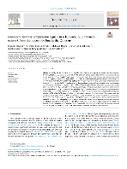Consistent summer temperature signals in a latewood blue intensity network from the upper tree line in the Caucasus

Autor
Dhyani, Rupesh
Martin-Benito, Dario
Doğan, Mehmet
Datum vydání
2025Publikováno v
DendrochronologiaRočník / Číslo vydání
92 (August)ISBN / ISSN
ISSN: 1125-7865ISBN / ISSN
eISSN: 1612-0051Informace o financování
MSM//SVV260694
MSM//EH22_008/0004605
UK/COOP/COOP
Metadata
Zobrazit celý záznamKolekce
Tato publikace má vydavatelskou verzi s DOI 10.1016/j.dendro.2025.126372
Abstrakt
Climate variability in the Caucasus region significantly influences tree growth in alpine tree line ecotones. However, long-standing human land-use history disrupted the natural equilibrium between montane forests and alpine meadows. These complex vegetation dynamics may cause traditional proxies such as tree-ring width (TRW) to display a weak climate signal, limiting their utility for understanding growth-climate relationships. To address these challenges, we established a multispecies network of seven tree ring width index (TRWI) and seven latewood blue intensity (LWBI) chronologies from three coniferous species (Picea orientalis, Abies nordmanniana and Pinus sylvestris) at current tree line sites (1900-2300 masl) in the Greater and Lesser Caucasus. Our results show that almost all the LWBI site chronologies demonstrate consistent and stable correlation with summer temperature (June-August). In contrast, corresponding TRWI chronologies reveal much weaker correlations with temperature, mainly with previous winter and spring. TRWI moderately responds to precipitation during the summer (JJA) while LWBI does not show any significant response to precipitation. The weaker and less consistent temperature signals in TRWI chronologies suggest additional influence of precipitation, non-climatic factors and local disturbance events on TRWI. Principal component analysis reveals a robust common signal in the LWBI network. First principal components from both proxies correlate with summer temperatures, although correlation is much higher for LWBI than for TRWI. The stable and consistent relationship between LWBI and summer temperature in different frequency domains indicates high potential of this proxy for annually resolved climate reconstructions at a regional level, which would be new for the Lesser Caucasus region.
Klíčová slova
tree-ring width, Caucasus, latewood density, alpine treeline, climate change
Trvalý odkaz
https://hdl.handle.net/20.500.14178/3135Licence
Licence pro užití plného textu výsledku: Creative Commons Uveďte původ 4.0 International






